Best Horror Games of the 21st Century
From nightmares in space to horrors that hit a little too close to home, these are the best horror games of the 21st century.
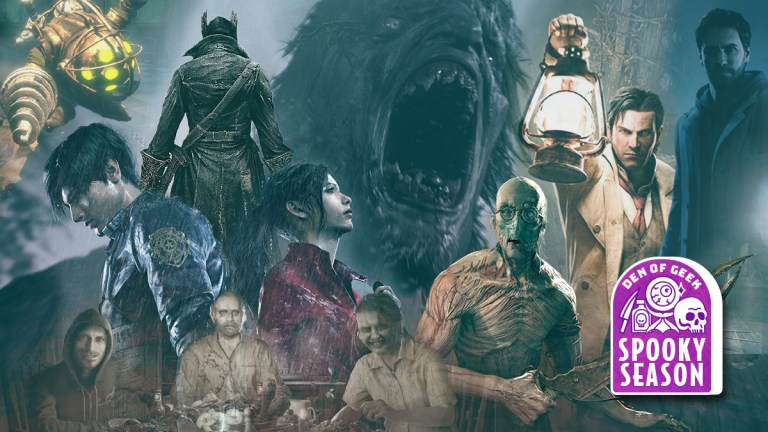
There are those who would have you believe the last 23 years of horror gaming have been a notable low point for the genre. However, horror gaming hasn’t gone away; it’s simply changed. Like a muted monster bursting from a lab, modern horror has escaped the confines of the Triple-A gaming industry and mutated into something more terrifying than even the horror gaming genre’s creators could have ever imagined.
We’ve been “treated” to the release of some of the most terrifying games you’ll ever have the fortune (or misfortune) of experiencing. As indie developers pushed the boundaries of how much terror we’re willing to tolerate in the name of entertainment, major studios responded with a new wave of digital nightmares. It’s been an era of unprecedented experimentation that has resulted in some of the most exciting examples of horror gaming ever unleashed upon the public. So which horror games from that time are the absolute best?
That’s the question we’re looking to answer today. These are the best horror games of the 21st century…
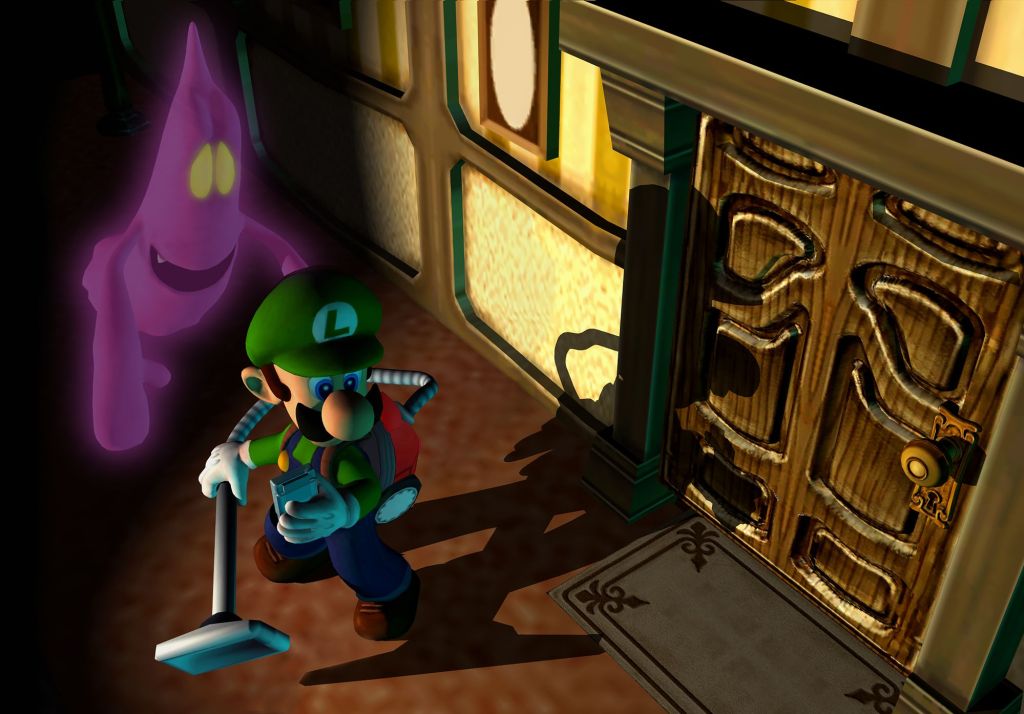
Luigi’s Mansion (2001)
Most horror games are designed for older gamers. After all, nobody in their right mind would expect a child to enjoy a tough game oozing with blood and scary visuals. However, the mad geniuses at Nintendo developed a horror game appropriate for all ages without losing any of the scary fun factor.
Luigi’s Mansion is a unique horror title where you control, as the title suggests, Luigi as he searches a mansion for his brother Mario. Oh, and the place is haunted. The game plays out like many survival horror titles, as you have to search the mansion’s darkened halls, and you never know when a ghost will pop out to give Luigi a heart attack. Despite the occasional jumpscare, the adventure never loses its kid-friendly demeanor. While you don’t have to worry about juggling ammo reserves or limited saves in Luigi’s Mansion, the game has plenty of tense moments and environmental puzzles. Luigi’s Mansion isn’t the scariest game out there, but it is the perfect title to introduce your children to the wide world of horror games. – Aaron Greenbaum
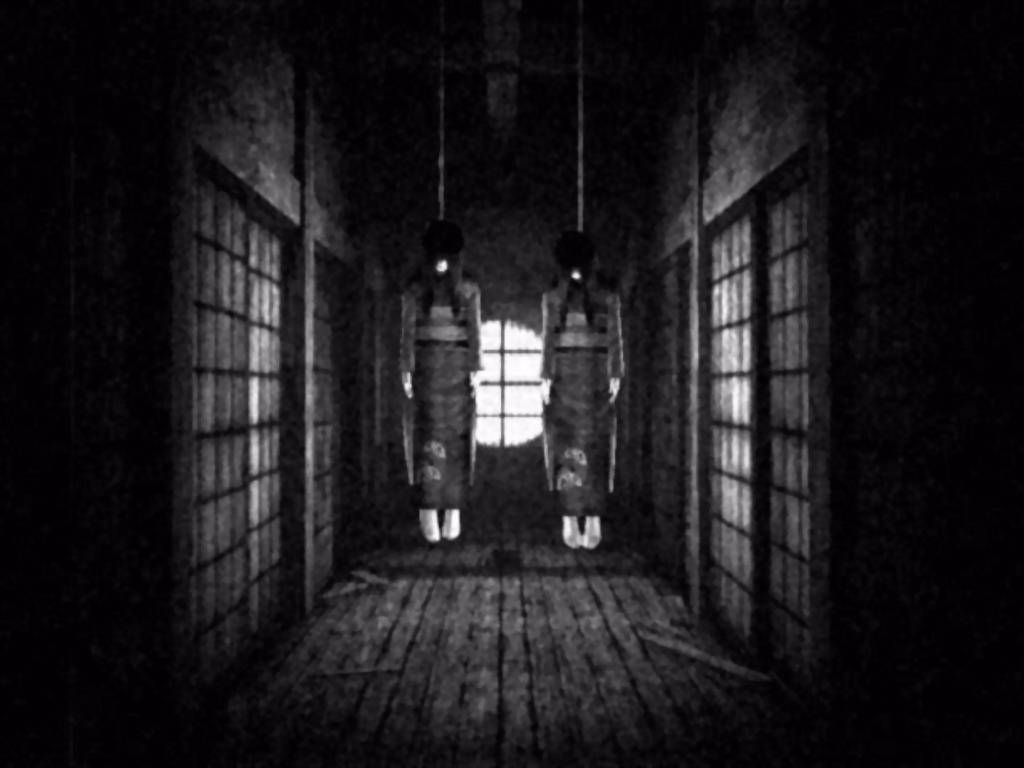
Fatal Frame 2 (2001)
The original Fatal Frame asked what would happen if you shot the undead with a camera rather than a gun. The result was a terrifying ghost hunt that forced players to keep a steady hand and not fire until they saw the whites of their enemies’ eyes…assuming they had any. But like many burgeoning horror franchises, Fatal Frame was far from perfect, so the developers refined the experience for its sequel.
Like the original Fatal Frame, Fatal Frame 2 is a tense journey through the dilapidated and haunted ruins of an abandoned Japanese village with only a magical camera for protection. Much of the challenge and tension stems from the ghosts, who are disfigured in entertainingly gruesome ways, and the only way to destroy them is by snapping their pictures. The closer you get, the more damage each shot deals, and if you wait until the ghouls are about to attack, you deal even more damage. Easier said than done since many ghosts can teleport, phase through walls, and turn invisible. Combine this terrifying combat with a sinister atmosphere that puts you on edge and sets you up for some deviously clever scares, and you are in for a wonderfully horrifying time. – AG
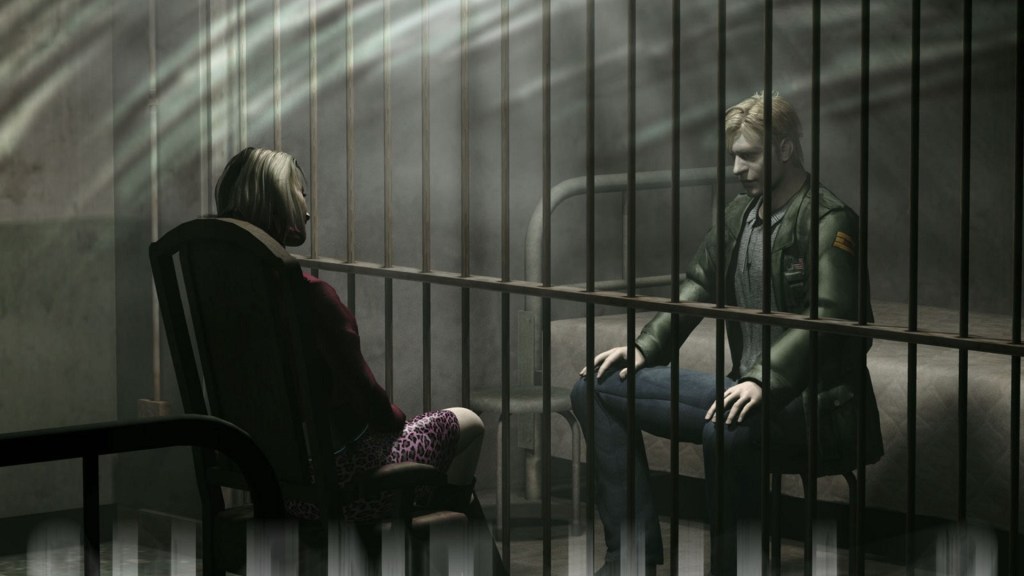
Silent Hill 2 (2001)
The problem with the “games as art” argument is that the terms are too often dedicated by those who do not fundamentally understand the medium. A game is not a painting, a book, a movie, or a TV series. It is all of those things and none of them. More importantly, it should more often than not be judged on what it is uniquely capable of achieving.
In its own ways, Silent Hill 2 has long represented that idea better than any other game. Its expert exploration of the very concept of psychological horror would not work nearly as well as it does if you were not an active participant in the entire experience. The game is shaped by not only how you interpret what is happening but how you interact with it. As such, your trip through Silent Hill will inevitably vary in terms of the specifics. What won’t change is the sheer horror of it all. – MB
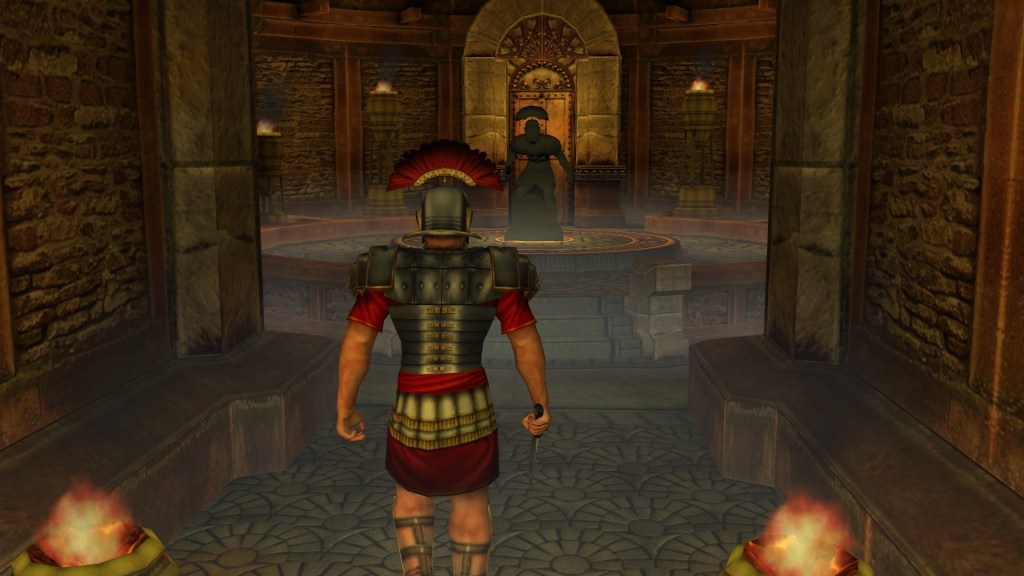
Eternal Darkness: Sanity’s Requiem (2002)
Lovecraftian horror is an easy sell since it tends to pit characters against entities whose mere existence defies physics and sanity. What could be better than that? How about a horror game that makes players feel like they’re going insane alongside the protagonists?
At first glance, Eternal Darkness: Sanity’s Requiem reads like a boilerplate, if polished, survival horror title. You have to explore haunted ruins, solve puzzles, and fend off walking crimes against nature to save the world from an eldritch apocalypse. However, Eternal Darkness sets itself apart with its multiple characters and a unique sanity system. The game’s story unfolds over millennia, and several characters revisit locations that prior protagonists explored. This chronological progression lets you feel like they are facing a timeless enemy that no one person can defeat. But more importantly, Eternal Darkness is primarily remembered for its sanity meter. Each time a character sees an enemy, this meter depletes, which produces in-game hallucinations. The lower a protagonist’s sanity, the worse these illusions get, to the point where they start breaking the fourth wall. You don’t know true survival horror terror until a game tricks you into thinking you’ve deleted your save file. – AG
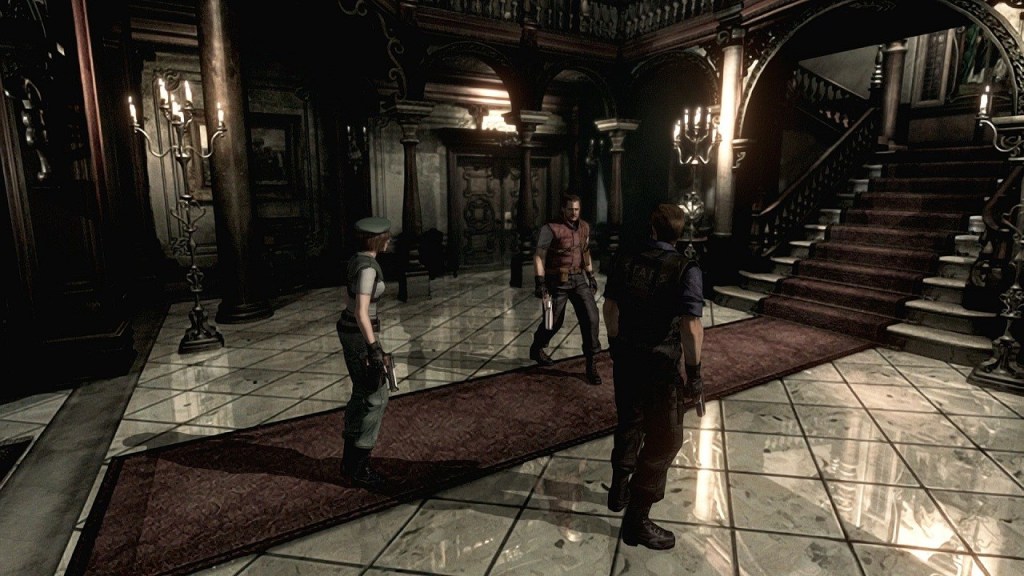
Resident Evil Remake (2002)
Though I honestly worried about featuring too many Resident Evil games on this list, the fact of the matter is that you can’t talk about modern horror gaming history without giving a lot of love to the Resident Evil franchise. Besides, Resident Evil‘s 2002 remake is increasingly in danger of becoming a lost Resident Evil title despite possibly being the scariest Resident Evil game ever made.
This remake is perhaps best thought of as what 1996’s Resident Evil would have been if time, technology, and knowledge had allowed its developers to complete their vision. It’s infinitely more playable than the original game, significantly better looking, and packed with new concepts, enemies, and areas that feel like they always belonged in the base experience. At a time when Capcom is reimagining Resident Evil’s earliest days, this remake shows how that classic style of survival horror can still deliver a uniquely terrifying and captivating experience. – MB
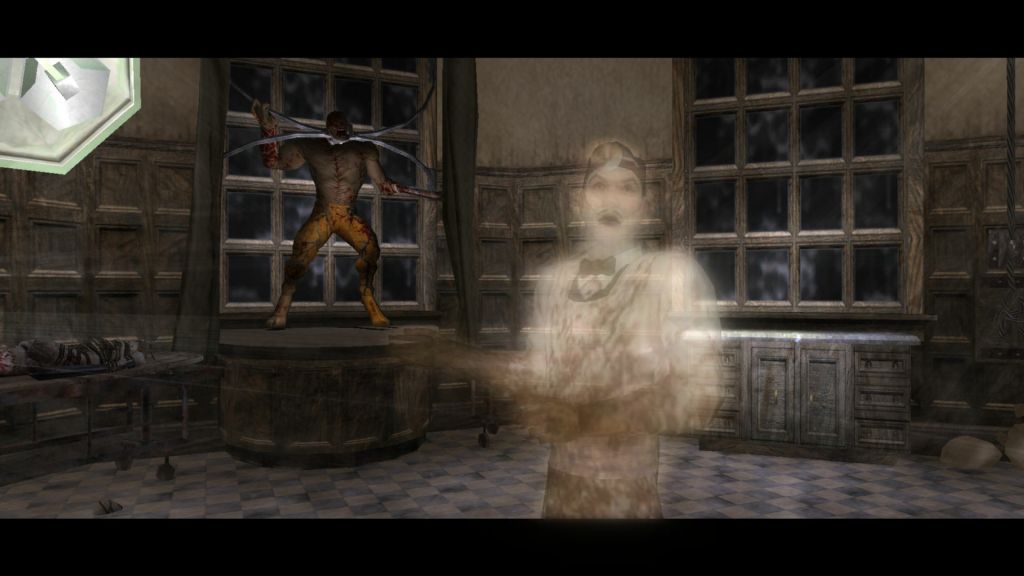
The Suffering (2004)
The mid-2000s saw a sudden influx of action horror titles of…varying quality. Though often entertaining on some level, those titles too often favored action over horror. Well, The Suffering is one of the more notable action horror titles that strived for a proper balance between those concepts and ended up somewhere pretty interesting in the process.
Though The Suffering lacks some of the more traditional scares found in classic survival horror titles, it is a brutal and relentless experience. Set in a Death Row facility that has been overrun by monsters of mysterious origins, The Suffering is violent, mean-spirited, and seemingly exists in a thick atmosphere of hopelessness. Yet, the decision to emphasize the brutality of the action and incorporate it into the game’s surprisingly strong narrative makes The Suffering a fairly unique and unmissable horror gaming experience. – Matthew Byrd
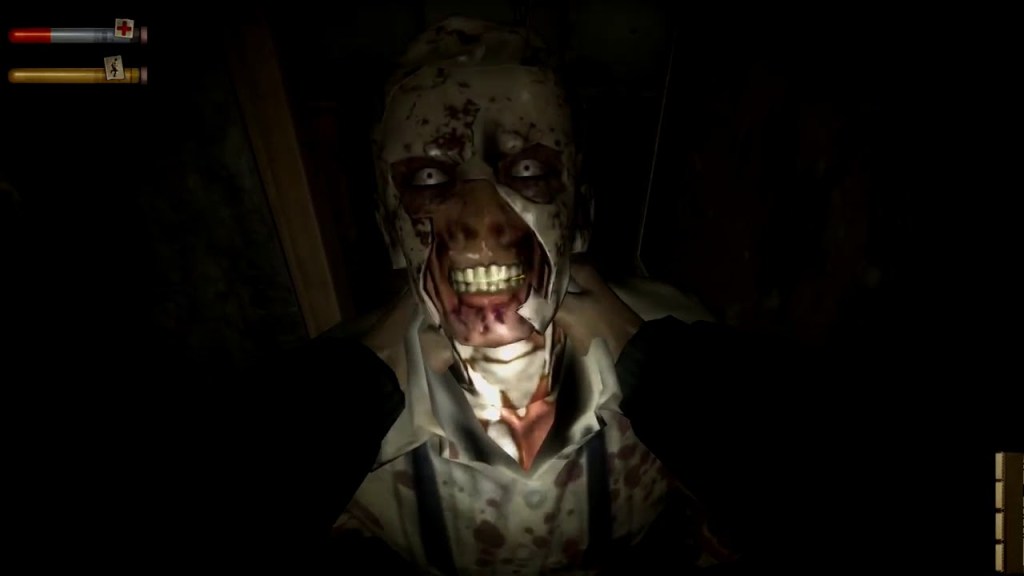
Condemned: Criminal Origins (2005)
Condemned: Criminal Origins was not the Xbox 360’s most-hyped launch game. Few likely knew it existed until they saw it sitting alongside heavy hitters like Perfect Dark Zero, Kameo: Elements of Power, and Call of Duty 2. Yet, Condemned not only proved to be arguably the Xbox 360’s greatest launch title but one of the most effective horror experiences from an era when the horror gaming genre was trying to find its place in a bold new world.
Condemned’s tale of an FBI agent who finds himself on the run after driving too deep into a serial killer’s world certainly owes a debt of gratitude to works like Seven and even The X-Files. Yet, it executes that specific brand of horror to near perfection. The only things more intimidating than this game’s lingering sense of dread are those payoff scares that make you long for the sanctuary of that lingering dread. Perhaps more importantly, Condemned’s brand of first-person horror action would later be reworked by titles like Resident Evil 7 and other modern horror masterpieces. – MB
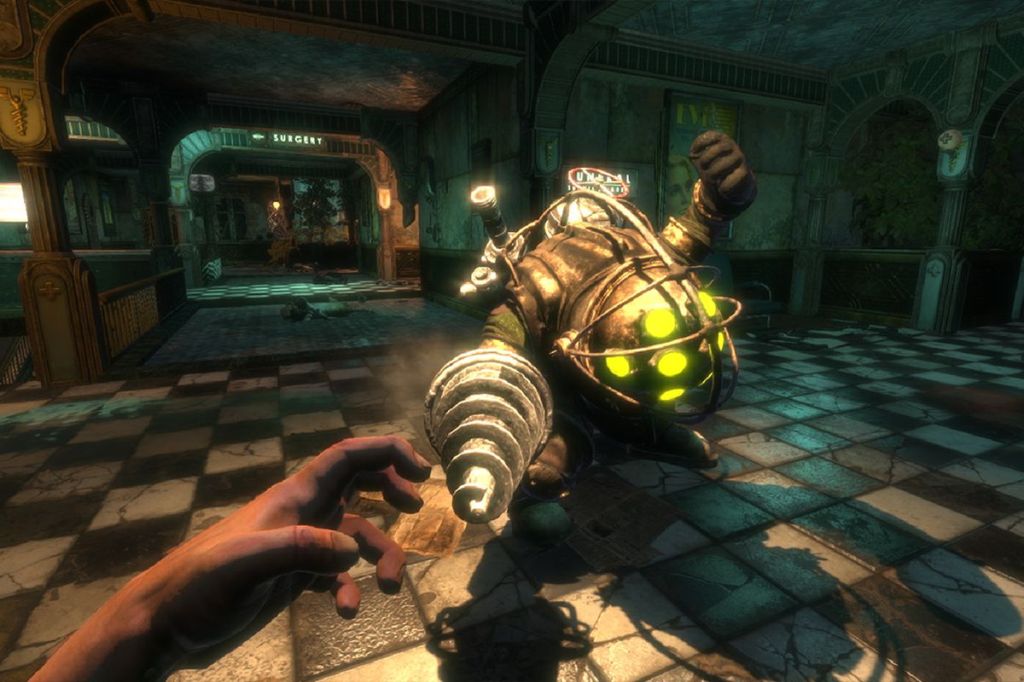
BioShock (2007)
At first glance, BioShock comes across as more of a first-person shooter than a horror title. While BioShock can actually lay claim to a few distinct genres, it’s the title’s horror elements that really make it something special.
BioShock starts with the main character in a plane that crashes into the middle of the ocean. While that would normally be a death sentence, he soon finds himself near the entrance to the underwater city of Rapture. What follows is nothing short of a peak horror gaming experience. Grimy corridors with atmospheric lighting and audio? Check. Little in the way of ammunition? Check. Disturbing imagery, audio logs, and oddly effective jump scares? Check, check, and check. While many of BioShock’s scares lose a lot of their effectiveness later on as players become flush with ammo, health, and experience, the game maintains an atmosphere that, if nothing else, gives audiences a sense of unease. – AG
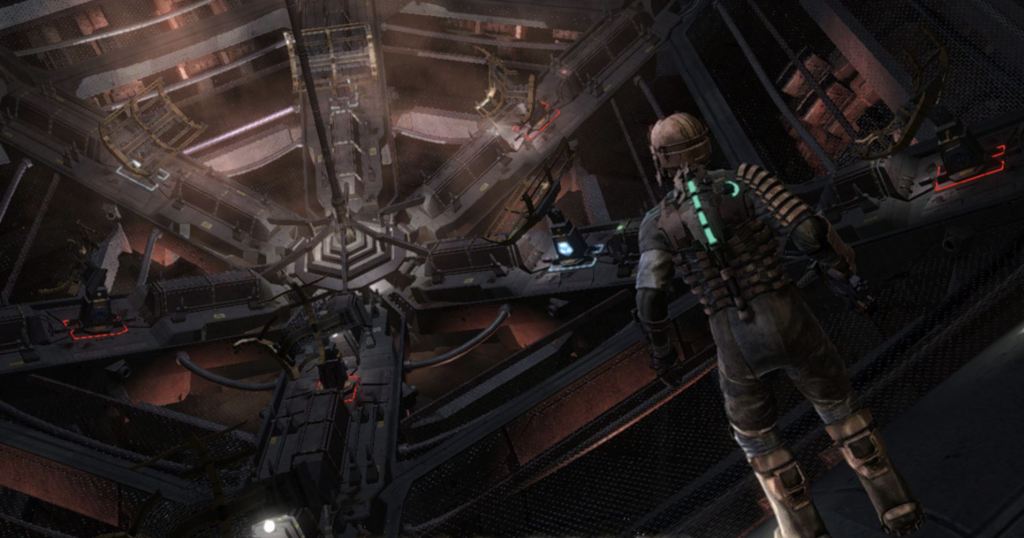
Dead Space (2008)
There are so many things about Dead Space that just work. The subtle storytelling, the minimalist UI, the incredible design of the Necromorphs, the hard sci-fi elements, the sound design…Dead Space is a masterclass in just about every element we use to praise and appraise survival horror games. Yet, the thing that really elevates Dead Space is its action.
It’s tough to make a genuinely scary horror game that also features a somewhat active combat system, but Dead Space gets that balance right. Dead Space’s combat manages to break up the monotony of a more traditional horror title while still serving as the basis for some of the game’s most memorable scares. It was that kind of game changer that was often imitated, seldom duplicated. – MB

Amnesia: The Dark Descent (2010)
I would never entirely dismiss the era of action horror games, but by 2010, a truly terrifying horror game felt like more of a novelty than it probably should have. Those who had grown accustomed to that era of gaming were not ready for what Amnesia delivered. Even if there had been scarier games during that time (and more of them), Amnesia probably still would have caught a generation of horror gaming fans entirely off-guard.
Amnesia is pure terror. There are few traditional gaming joys to be found in this first-person excursion through a demonic labyrinth. Staying alive is both the goal and the reward. It’s an inherently challenging form of game design that the game doesn’t even attempt to make easier. Yet, if you allow yourself to be swept up in what Amnesia excels at doing, you will be able to enjoy the sensation of being truly terrified by your helplessness which can’t quite be replicated via any other format. – MB
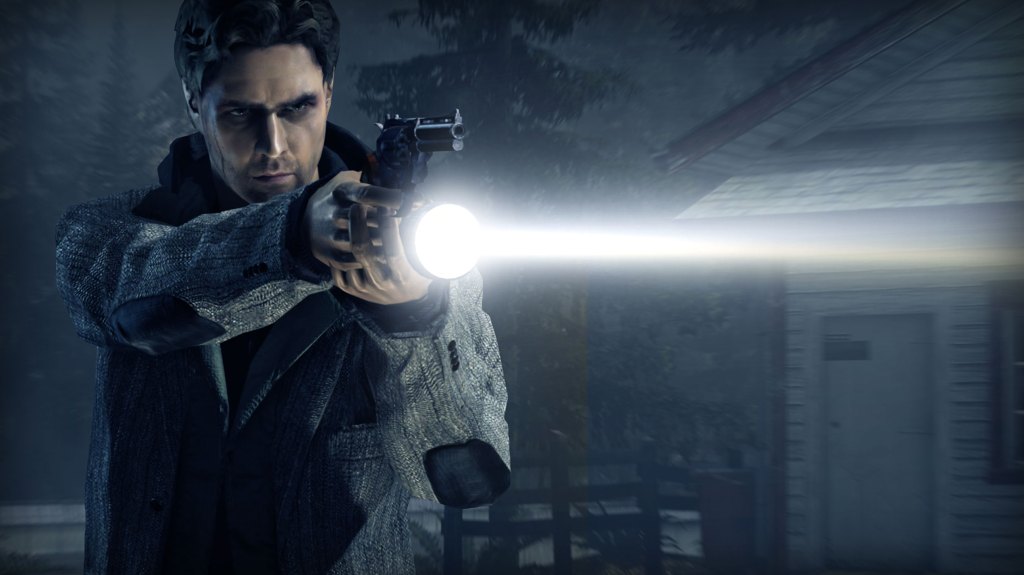
Alan Wake (2010)
Remedy Entertainment became a household name fairly early on thanks to the revolutionary third-person shooters Max Payne and Max Payne 2. After those crime dramas, Remedy tried a stab at horror with Alan Wake. While the sudden shift in tone and genre threw some fans for a loop (as did the game’s long development cycle), the results spoke volumes of the team’s creative range.
Alan Wake revolves around, predictably, a man named Alan Wake. He’s an award-winning author with a nasty case of writer’s block, so to get the creative juices flowing, Alan’s wife brings him to Bright Falls, Washington. While he does start writing again, he only does so under the influence of a malevolent entity that is now bringing his book to life. The upshot of that traumatic event is that much of this game plays out like a horror novel. Alan Wake’s levels shift from inviting to threatening with just a tweak in lighting, and it knows when to lay on the scares and when to give players a breather, if only to rip any sense of safety away with more tension and horror shortly after. While Alan Wake features plenty of action segments, expert pacing ensures players never get used to the scares. – AG
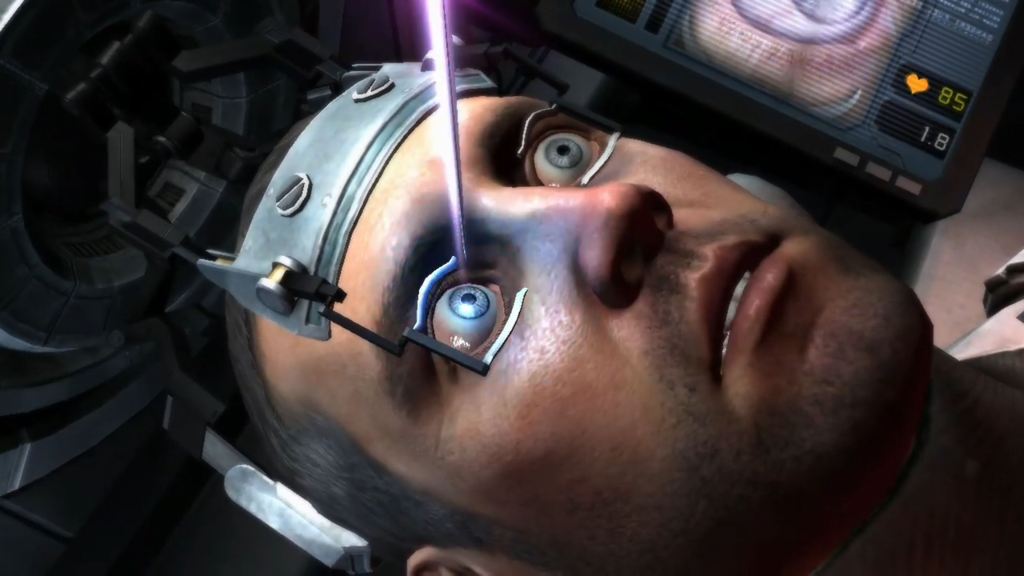
Dead Space 2 (2011)
Despite being the sequel to a hit horror game that utilizes many of the elements that made its predecessor so notable, Dead Space 2 really is a bold game in many ways. After all, the original Dead Space relied on minimalist elements to heighten its sense of mystery, Dead Space 2, meanwhile, featured far more “setpiece moments” that could have easily yanked the player out of the experience if they weren’t properly handled.
Thankfully, all of those moments are indeed properly handled in Dead Space 2. All of the incredible scares from Dead Space are present and accounted for in this sequel, but Dead Space 2 boldly incorporates some truly amazing sequences that push the boundaries of the franchise further than you ever thought they could go. From “that needle scene” to a disturbing visit to a nursery, Dead Space 2 is a testament to the power of perfectly setting up the kind of horror moments that stay with you long after the screaming has died down. – MB
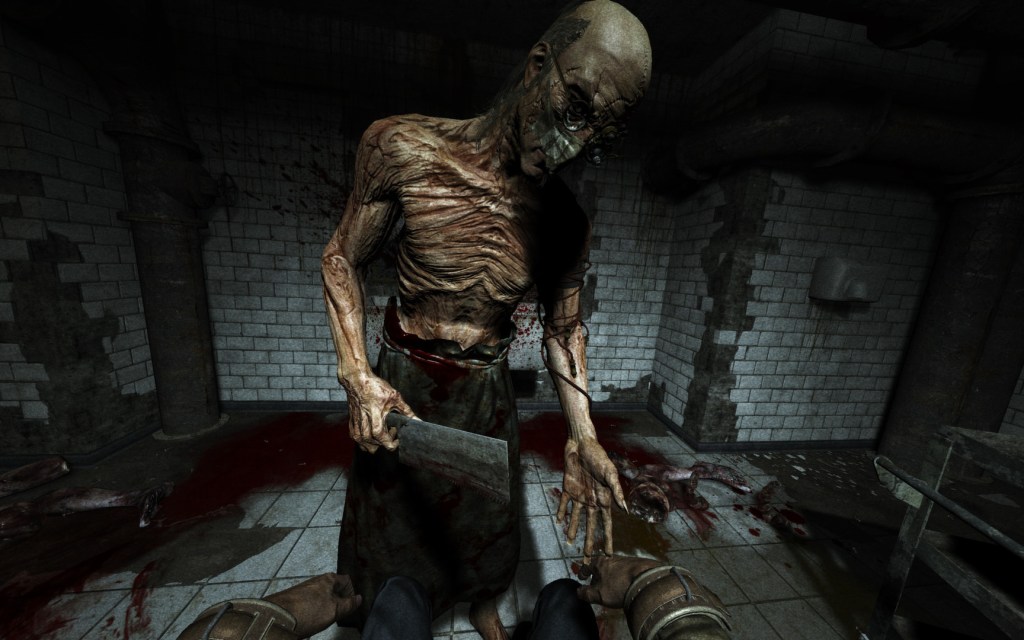
Outlast (2013)
Outlast’s basic premise (an investigative journalist is sent to a remote asylum) should give you an idea of what the game has in store for those who dare to play it. However, the frightening truth of the matter is that nothing can properly prepare you for what the experience of actually playing Outlast is really like.
Even Outlast’s most disturbing moments can’t top the terror of wandering down yet another dark hallway or hiding in yet another grimy locker wondering if the on-screen monster can hear your real-life breaths. Outlast is the kind of horror game that is so scary that some gamers will find it to be fundamentally unenjoyable. Ultimately, I think that’s a testament to the game’s brilliance. – MB
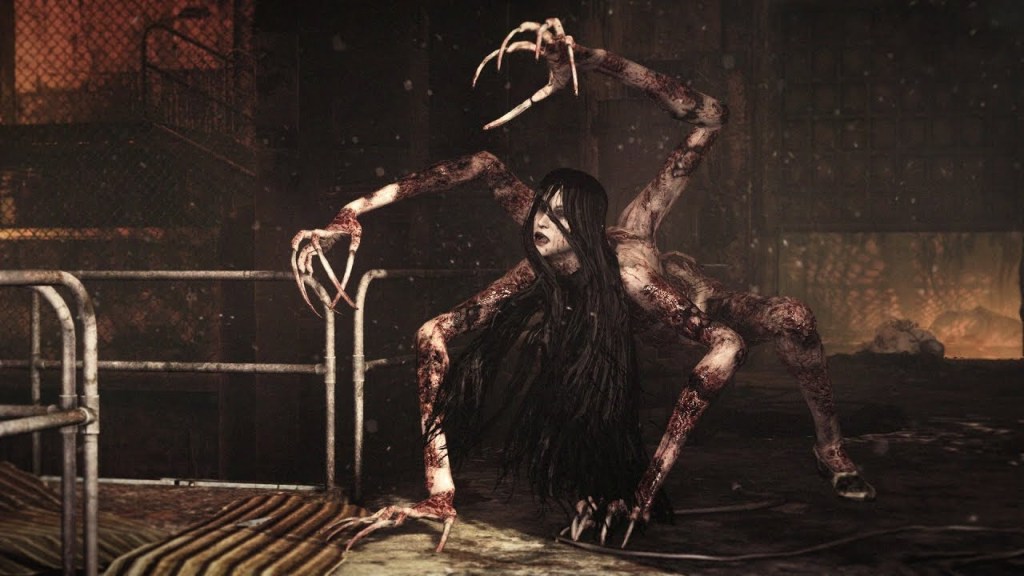
The Evil Within (2014)
In some ways, The Evil Within will always be remembered as the legendary Shinji Mikami’s return to horror and, very likely, the last horror game Mikami will ever direct. When viewed through that historic lens, it’s easy to see why some were ultimately disappointed by this game. When taken on its own merits, though, it’s hard to call The Evil Within anything less than one of the best pure horror experiences of its era.
The Evil Within is that kind of classic horror game that is designed to make you panic. You’ll panic over your dwindling supplies, you’ll panic over that noise you just heard, and you’ll certainly panic when you’re forced to run away from yet another creature you can’t really describe because you’d rather not look at it. Despite the moments when you’ll want nothing more than to simply quit, The Evil Within’s cinematic love letter to all things horror gaming will keep you going. – MB
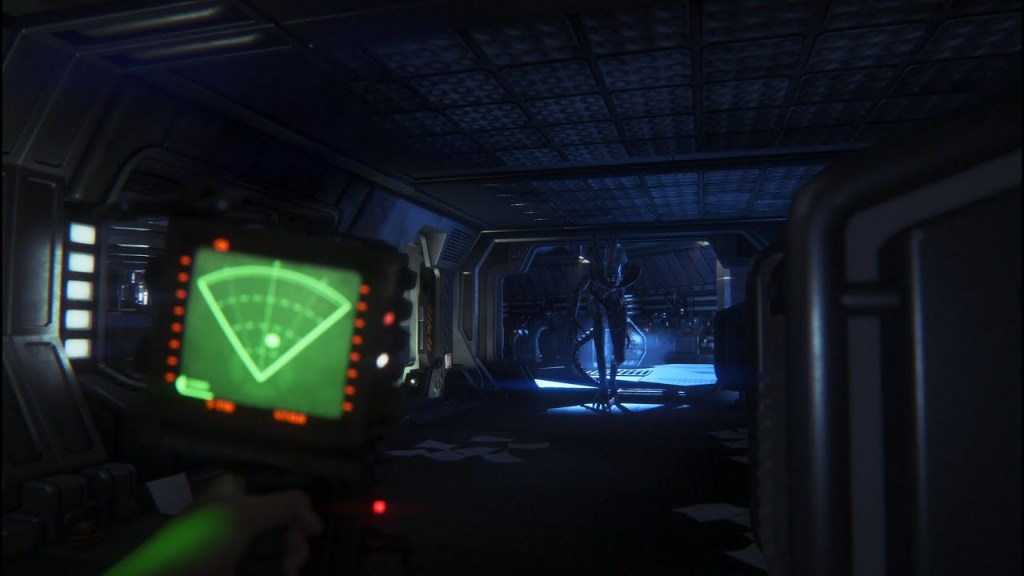
Alien: Isolation (2014)
The secret to good horror is keeping audiences on their toes. If you can accurately predict what will happen next, the illusion is dispersed, and all fear evaporates. This is a huge hurdle for horror games, especially when players want to replay a title since they will already know where each scare is located. However, Alien: Isolation’s scares work because they don’t fall into that trap.
Alien: Isolation is a movie tie-in where players control Ellen Ripley’s daughter, Amanda Ripley, on a mission to find out what happened to her mother. Amanda’s research takes her to Sevastopol Station, which is unfortunately home to an alien that is seemingly immune to bullets. This perfect killing machine is the key to Alien: Isolation’s success since it runs off of one of the most advanced video game AIs to date. As players wander through the game’s station, the alien does the same. It can not only leap out of any doorway or ceiling vent, but it also learns as time goes on. The only way to survive is to soak in the game’s atmosphere and sound design, which hide subtle clues as to the alien’s whereabouts. Not even safe havens in other horror games, such as save rooms, are safe in Alien Isolation, which makes sure players are always on edge and on high alert. – AG
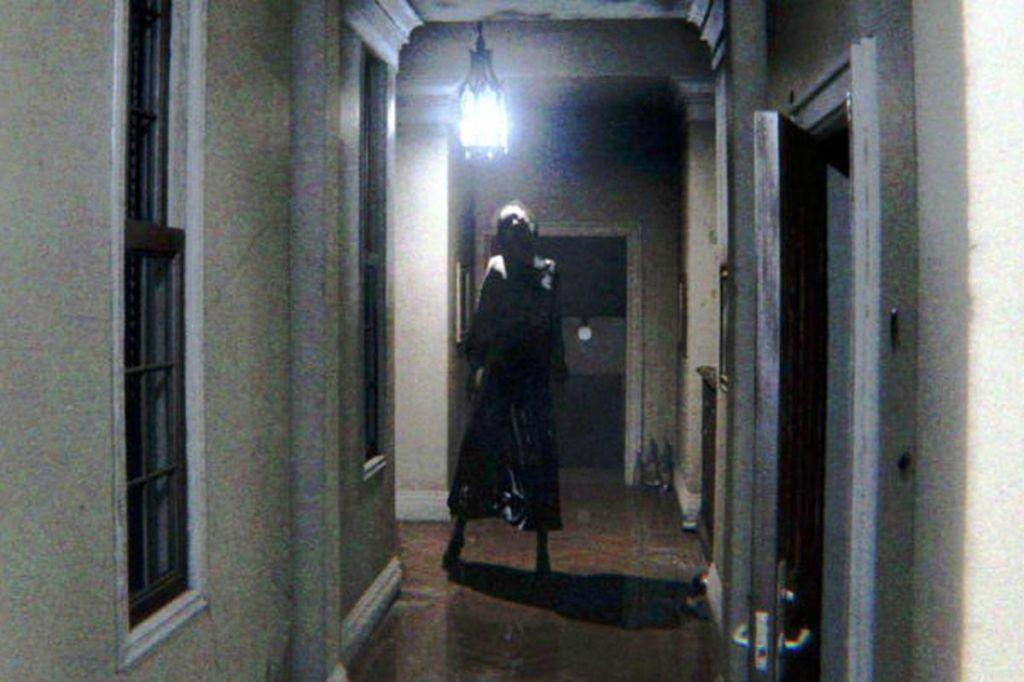
P.T. (2014)
There are times when you have to stop and remember that P.T. was essentially a demo for a game that was never even released. Horror games never had to offer dozens of hours of gameplay, but a horror game that can be beaten in less than an hour would usually be a significant asterisk. Actually, the bigger asterisk next to P.T.’s name may be the fact that you can’t even play the game today without turning to fan remakes or preserved saves on secondhand hardware.
Yet, there was little doubt in our minds that a demo for an unreleased game that you can’t even easily download today really is one of the best horror titles ever made.
Put aside the story of P.T.’s Silent Hills connections and legendary stealth release, and you’re still left with what just might be the scariest game ever made. Diving deeper into Hideo Kojima’s horror mystery box requires you to ignore every instinct that screams “Just run away.” You’ll never play a horror game that feels so meticulously constructed yet wild in a way that leaves you feeling as if the same action could produce two wildly different results. This is just a masterpiece of genre design. – MB
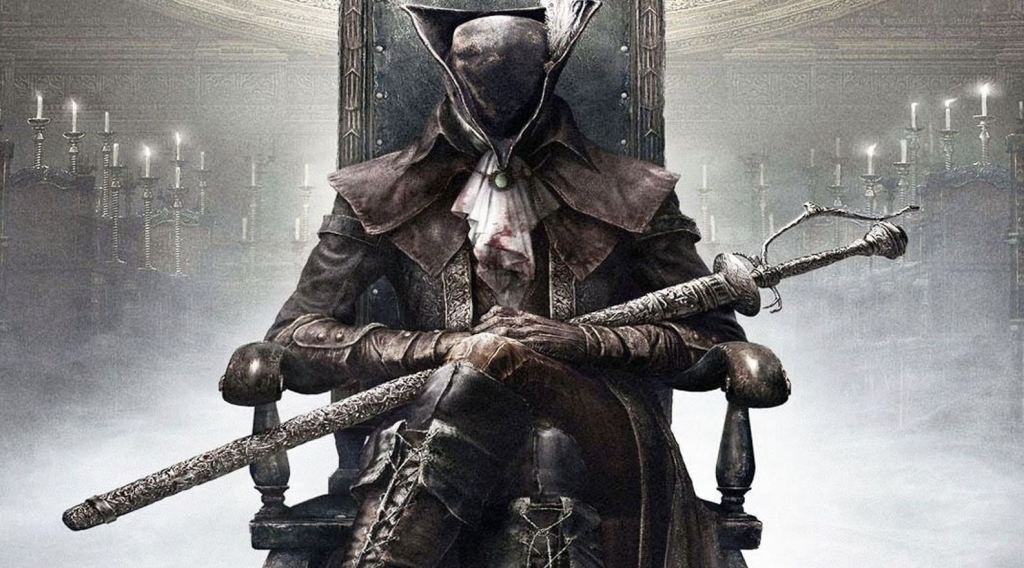
Bloodborne (2015)
All Soulsborne titles carry an air of terror. The games all take place in a grimdark world where civilization has crumbled and everyone is either undead, insane, or both. That’s to say nothing of all the mutated wildlife. Bloodborne takes horror in the Soulsborne genre to a different level.
Bloodborne starts off like most Soulsborne titles: Players are thrust into a “tutorial” that provides the bare basics right before throwing them into the deep end. Like Dark Souls before it, many of Bloodborne’s scares come from the fear that a monster is waiting around every corner to snack on your larynx. However, Bloodborne’s scares are far more effective thanks to what really sets the game apart: excellent use of gothic and cosmic horror. The further players progress and the more they witness, the more enemies push the limits of body horror. Sound design sets off imaginations since the grunts and roars of terrifying beasts are occasionally heard in the distance. The lore, in true FromSoftware fashion, provides enough breadcrumbs to terrify players without providing all the answers. As is true of horror from every medium, nothing is quite as frightening as the scares thought up by an unfettered imagination. – AG
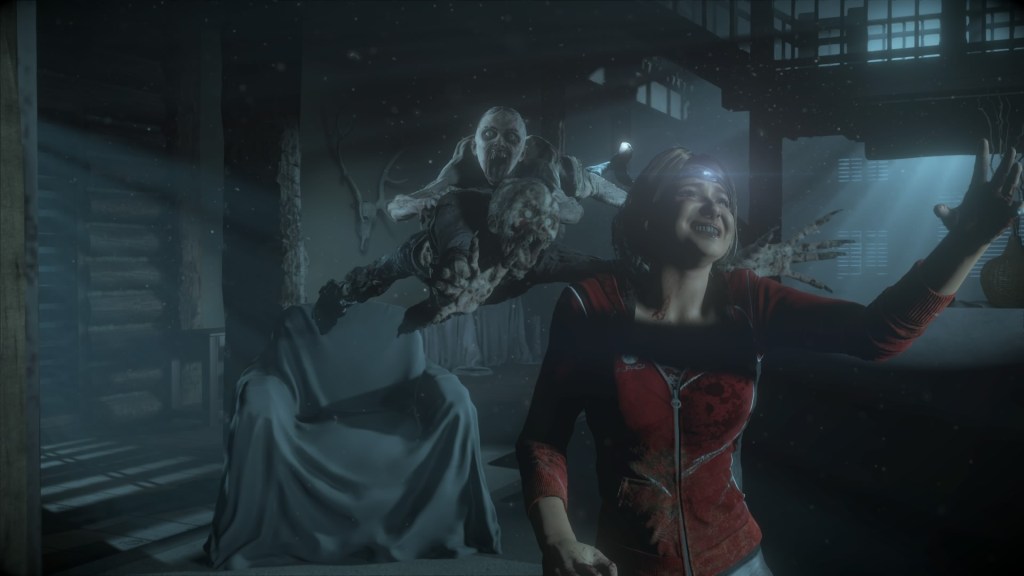
Until Dawn (2015)
While “fun” isn’t the word most often used to describe the absolute greatest horror games ever made, there’s something to be said for a horror game that manages to be equally enjoyable and scary. In many ways, Until Dawn might just be the best example of a fundamentally enjoyable horror game that doesn’t skimp on the scares.
Until Dawn is essentially the ultimate test of your ability to survive a horror movie. Have you always laughed at those teenagers in slasher films that always seem to make the wrong decisions? See how well you do when you’re tasked with helping a group of teens survive a nightmarish trip to the woods. Many games give you choices, but few take glee in watching you squirm over your decisions quite as much as this one. – MB
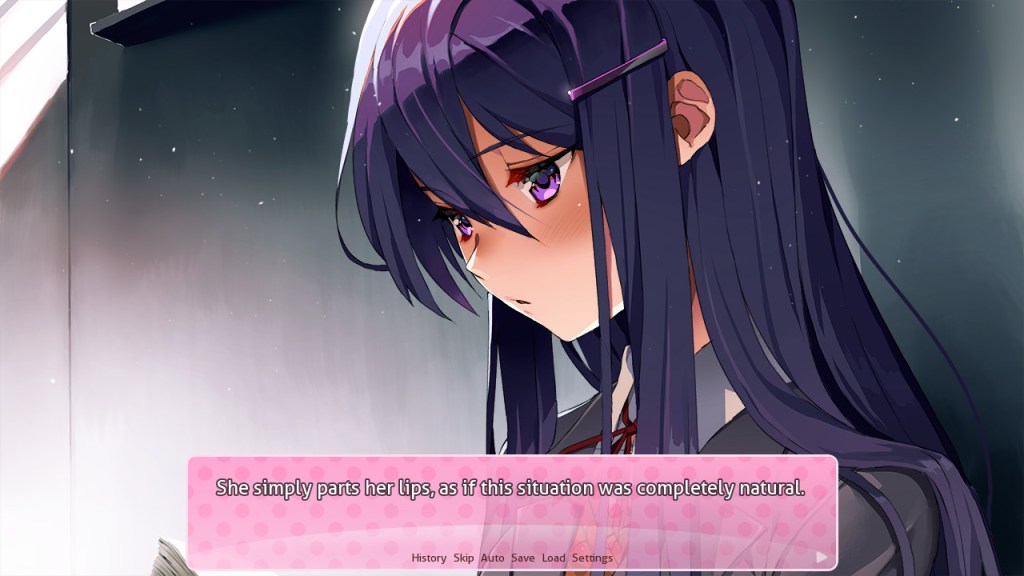
Doki Doki Literature Club (2017)
On the surface, Doki Doki Literature Club doesn’t look like a horror game. If anything, it looks like your typical, run-of-the-mill anime visual novel. But like an anglerfish, that design is intentionally deceptive. By the time players realize the game’s true nature, it’s too late.
In Doki Doki Literature Club, players control the only male student in a literature club full of girls, and all of them are in some way attracted to the protagonist. The game starts off with a simple dating sim-type loop that involves talking to the club’s four girls and using a fill-in-the-blank system to create puzzles. But partway through the game, Doki Doki Literature Club switches tone from a fan-service title to a horror experience that toys with the fourth wall. Players have no idea what to expect, or when to expect it, which keeps the scares fresh and terrifying. It also helps that some of Doki Doki Literature Club‘s best moments take place outside the game proper. Yes, Doki Doki Literature Club isn’t just a horror title; it’s an AR adventure that asks players to sift through the game’s files. The deeper players delve, the creepier things become. – AG
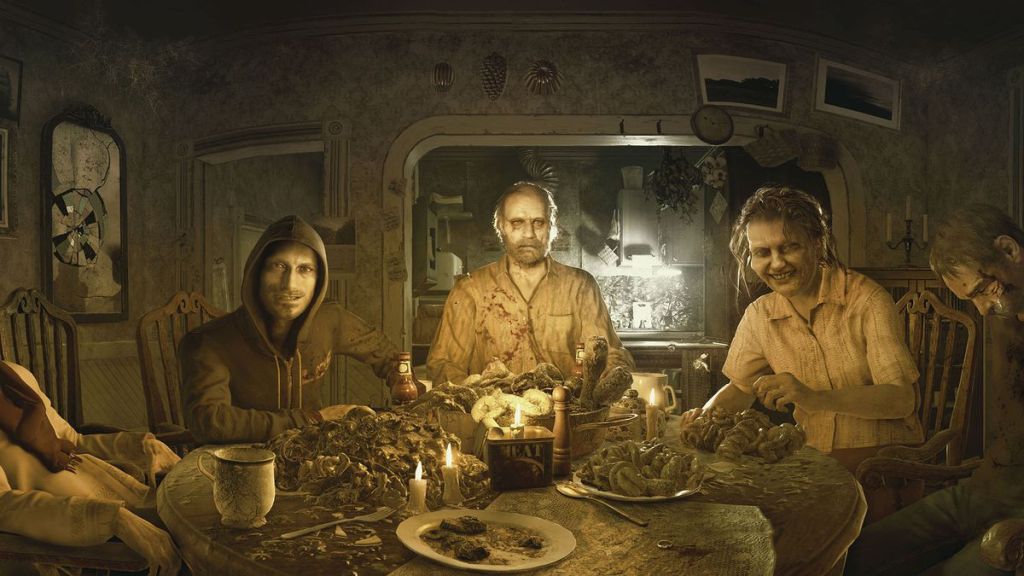
Resident Evil 7 (2017)
After Resident Evil 6 abandoned its survival horror roots for fast third-person shooter action, many fans lost faith in the franchise. Resident Evil 7 promised to be a return to form for the series, but it was more than just that; it was one of the scariest entries in gaming’s most famous horror franchise.
Instead of starring an established Resident Evil character on a mission to stop an evil pharmaceutical company’s weaponized zombies, Resident Evil 7 tightens its scope for a more in-your-face experience. In this game, players control Ethan Winters as he tries to escape a decrepit Louisiana mansion that is home to insane mutants and mold creatures. RE7 is almost completely confined to hallways, which provide an air of claustrophobia and make each encounter tense, especially since some enemies wander the mansion and can only die when the plot demands it via boss battle. The end result is essentially an intractable slasher film with plenty of gore and a camera that gives players a front-row seat to the action and viscera. Resident Evil 7’s scares were so successful that Capcom had to tone them down for its sequel. – AG
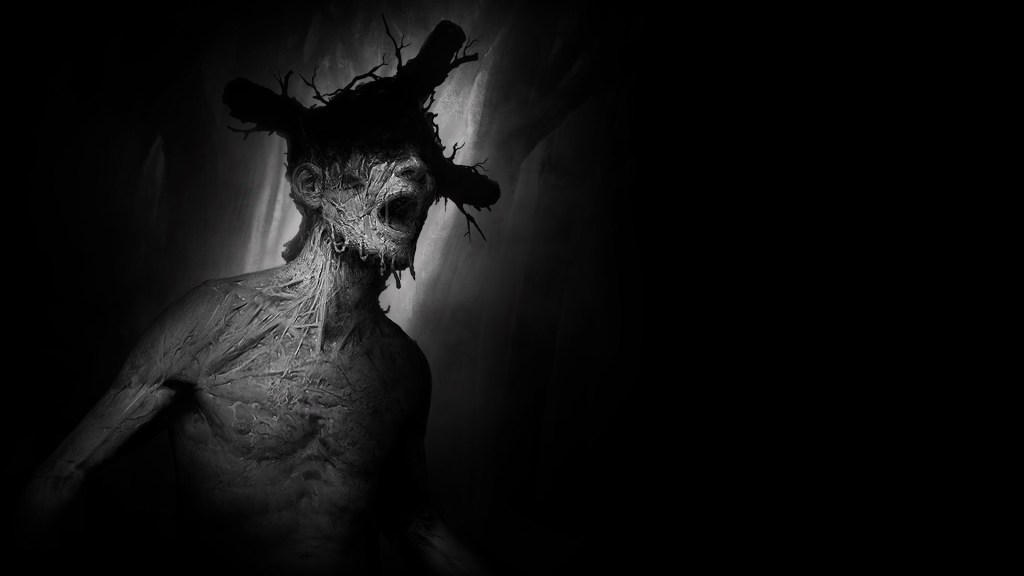
Darkwood (2017)
There are days when I think that Darkwood’s best moments are those nighttime invasion sequences that force you to board the windows, lock the doors, and see if you’re able to survive an assault from forces best left unseen. If nothing else, those sequences are rightfully known as the game’s marquee attraction.
Yet, the thing that really elevates Darkwood are those indescribable, almost Lovecraftian nightmares you find in the daytime when you’re forced to leave your cabin and look for supplies. Darkwood features some of the most disturbing images and ideas I’ve ever seen in a horror game, yet you often have to turn a blind eye to them just so you can focus on finding the material needed to live through another night. That’s what makes it one of the absolute best examples of the entire survival horror concept. – MB
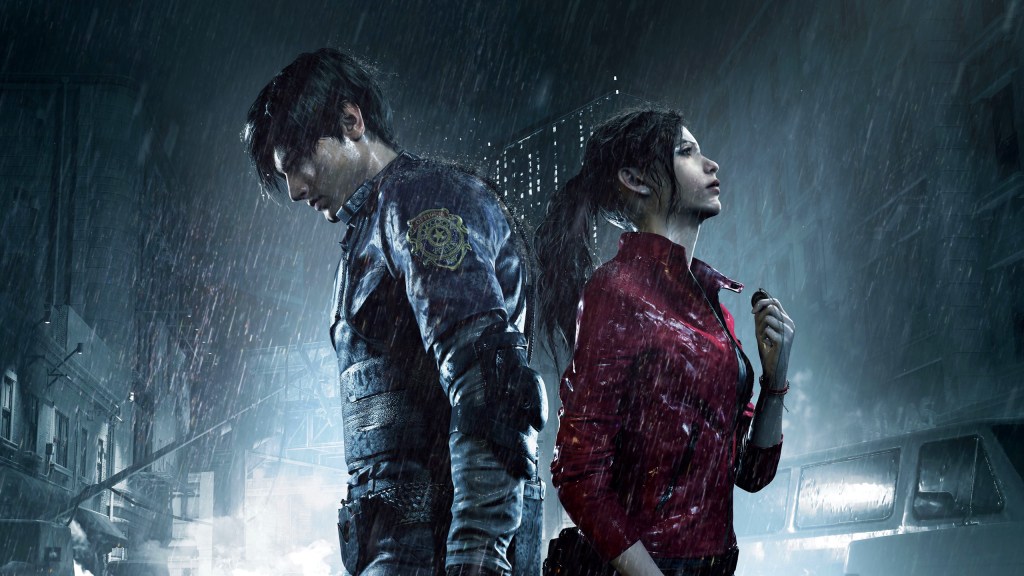
Resident Evil 2 Remake (2019)
The original Resident Evil 2 was a huge improvement over the original Resident Evil. More locations, more guns, more scares…basically, everything you’d want from a sequel. When Capcom remade Resident Evil in 2002, gamers expected the company to do the same with RE2. However, that dream game never materialized until 2019. The result was worth the wait.
The Resident Evil 2 remake dials all of what made the first RE2 game scary up to 11. Dark corridors keep players on edge, while resources are kept intentionally limited. Moreover, despite using third-person shooting controls, combat is slow by design, which inspires a necessary sense of helplessness. All of these are key ingredients for successful survival horror, but the secret sauce to Resident Evil 2’s success is Mr. X. In this remake, players have to contend with a giant pursuer who can lay them out in a few hits and can only be stunned, never stopped. They have enough healing items and ammo for a regular zombie, but do they have enough for Mr. X? Your constant inability to answer that question is enough to keep you in a cold sweat. – AG
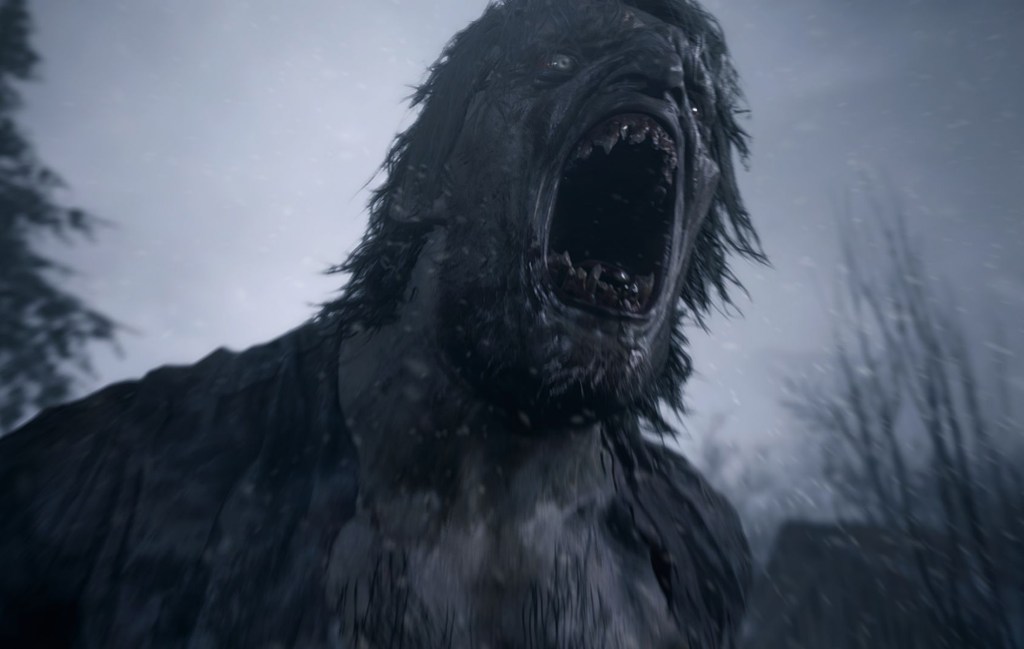
Resident Evil Village (2021)
Resident Evil Village was burdened by the expectations set by its stellar predecessor. In some ways, this game wasn’t quite able to live up to those lofty expectations. Yet, it’s hard to deny that this game did some truly fascinating things with the ideas, characters, and plot points set in motion by Resident Evil 7.
Actually, Resident Evil Village features some of the most incredible uses of slightly more “traditional” horror we’ve ever seen in a Resident Evil game. Granted, there’s a scientific explanation (of a kind) behind the whole thing, but Village’s Gothic atmosphere and classic creature designs tap into the roots of the horror genre in ways that are a joy to experience. Well, except for the House Benevidido level. That whole section raises the bar for how scary a Resident Evil game can be – MB
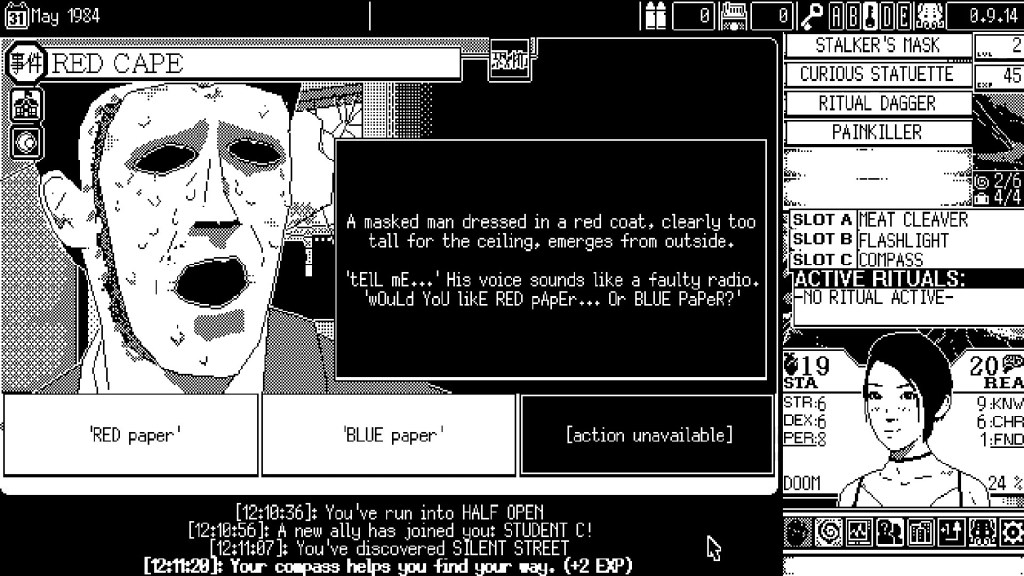
World of Horror (2023)
The first game to solidify the survival horror gameplay loop, or at least the genre’s name, was the Famicom RPG Sweet Home. Somewhere along the way, survival horror games mutated into first-person and third-person action adventures, but World of Horror channels the genre’s turn-based roots.
World of Horror is a roguelite horror where you explore a haunted seaside town and uncover its horrible mysteries and secrets. The plot reads like something right out of a Junji Ito manga, and that was clearly intentional since the game’s pixelated graphics channel the body horror aesthetics of Ito’s work with terrifying effectiveness. However, World of Horror isn’t scary merely due to its visuals. The game is a tough and unforgiving investigation experience where every action makes the clock tick down to armageddon. World of Horror has a steep difficulty curve, thanks in no small part to turn-based battles that vary in difficulty depending on your sleuthing skills beforehand. But, every failure is a learning experience and unlocks something new for future runs. World of Horror is a must for horror fans of all calibers. – Aaron Greenbaum
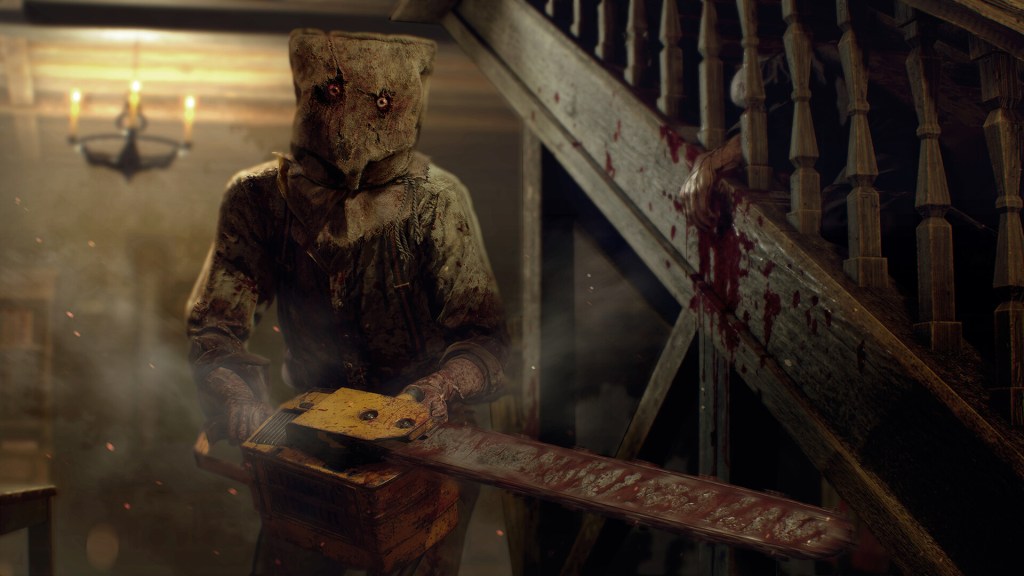
Resident Evil 4 Remake (2023)
Many modern survival horror titles owe at least part of their existence to Resident Evil 4. The game developed a third-person control scheme that has become standard throughout the industry, albeit with several tweaks and refinements. Even the recent Resident Evil remakes use this control scheme. This raised the question of what a Resident Evil 4 remake would be like, and the answer is nothing short of amazing.
The Resident Evil 4 remake is a refined experience that takes the skeleton of the original and gives it stronger gameplay muscles and a better-looking 4K skin. Its gameplay is much smoother, but perhaps more importantly, much scarier. The RE4 remake does away with the original’s campy attitude and focuses on a dark atmosphere and locations that ramp up tension. The RE4 remake knows how to make you scream, either because a monster jumped out from a dark corner or because a Ganado’s head exploded into a Las Plagas at the worst possible moment. And just like the original, the Resident Evil 4 remake includes DLC that lets you control Ada Wong. – AG
